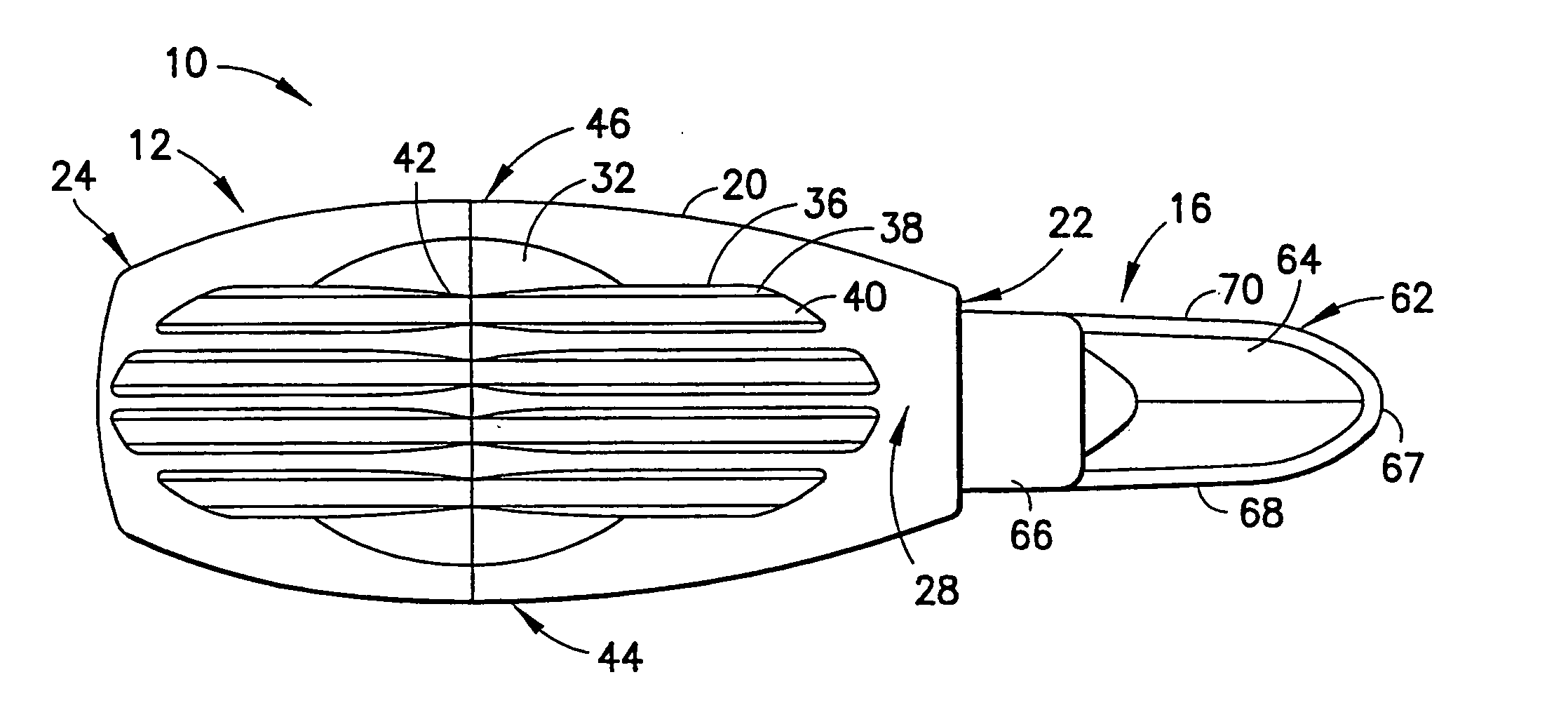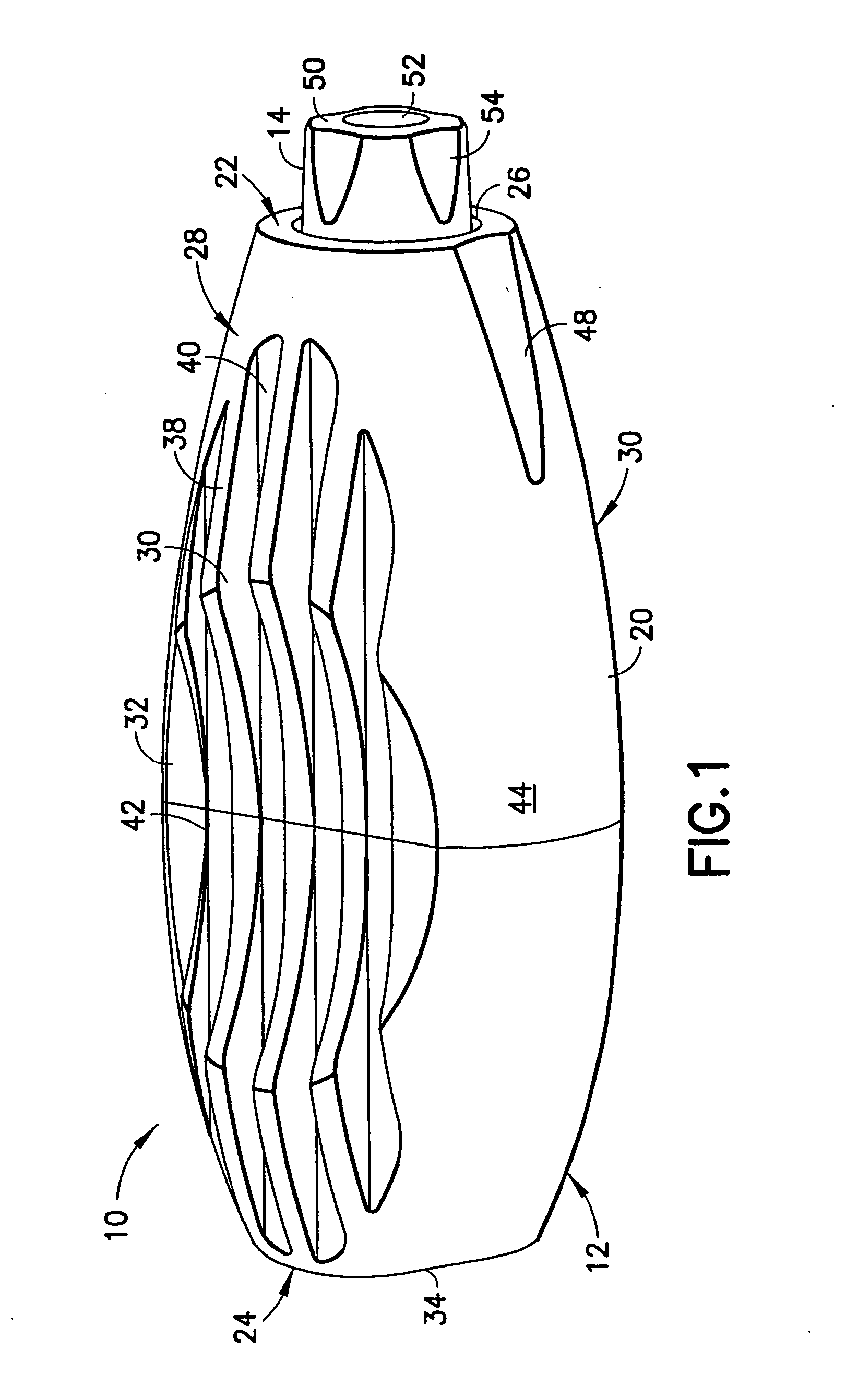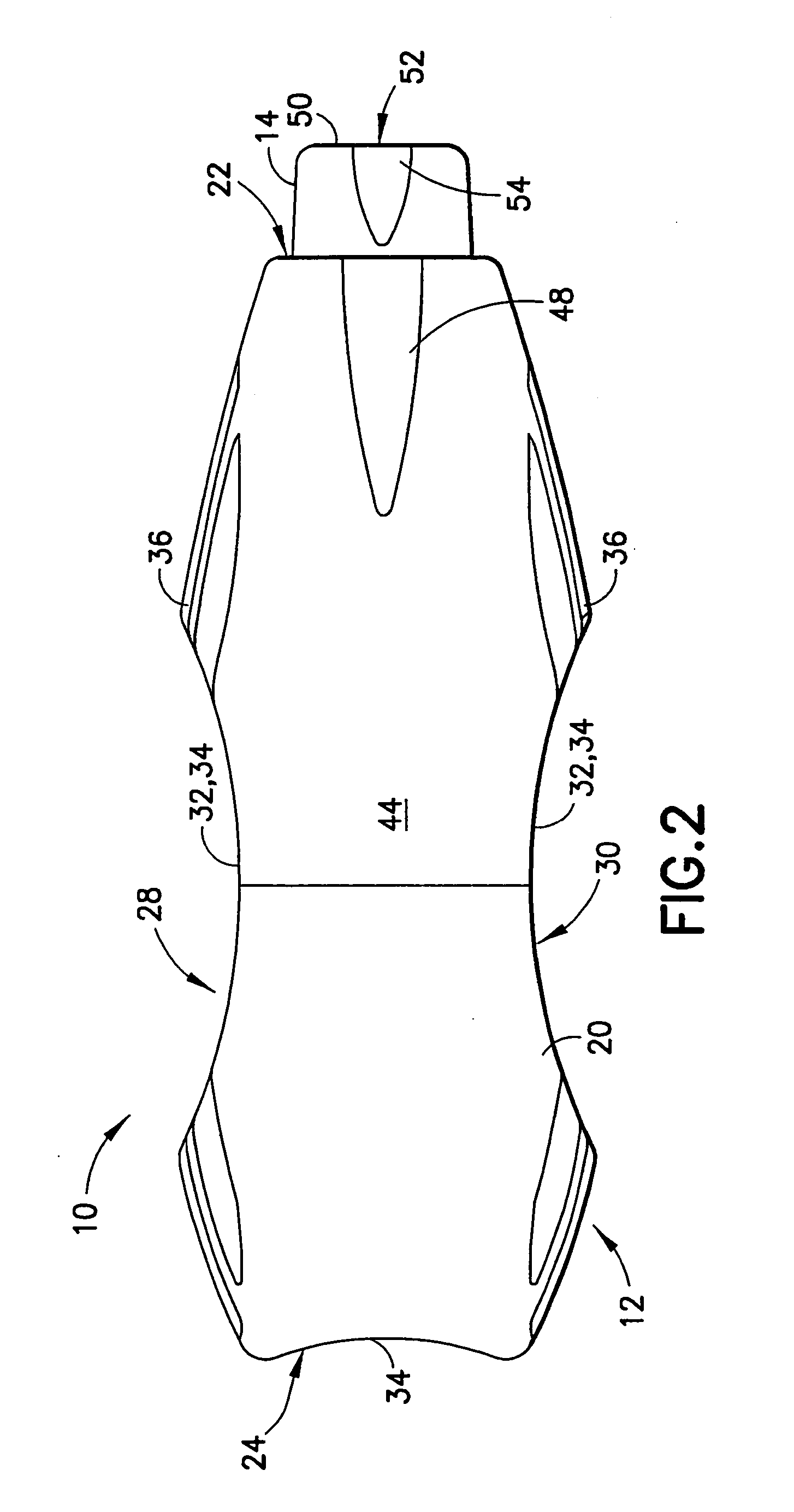Lancet device
a technology of lancets and blades, which is applied in the field of medical puncturing devices, can solve the problems of not being designed for ease of use by the operator, the shape of the shield portion does not lend itself to instructing the user, and it is difficult for many people to prick their own finger with a hand-held needle or blade, etc., and achieves the effect of maintaining sterility
- Summary
- Abstract
- Description
- Claims
- Application Information
AI Technical Summary
Benefits of technology
Problems solved by technology
Method used
Image
Examples
first embodiment
[0097] Referring further to FIGS. 7-16, a sterile tab member 16 according to one embodiment is illustrated in connection with the lancet device 10. In the tab member 16, the tab member is associated with the distal end 22 of the housing body 20 and encompasses or encloses the shield 14. In each of the embodiments of the tab member 16 to be discussed in this disclosure, the primary function of the tab member 16 is to enclose and shield the puncturing element, i.e. the lance tip, contained within the housing body 20 prior to actuating the lancet device 10. To use the lancet device, the tab member 16 must first be removed from the puncturing element. The tab member 16 is generally associated with the lancet assembly and may be integrally molded to a portion of the lancet assembly during a molding process. For example, during such a molding process, the tab member 16 may be integrally molded with the lancet structure of the lancet assembly and molded to enclose the puncturing element or...
fifth embodiment
[0109]FIGS. 32-36 show the tab member 16d. This embodiment is substantially similar to the tab member 16c discussed immediately above. In this embodiment, the paddle-shaped member 64d is also generally non-symmetrical in plan view, and the opposed edges 68d, 70d of the paddle-shaped member 64d are not oppositely curved. However, the opposed edges 68d, 70d define opposed longitudinal curved portions 88d, as shown in FIGS. 32 and 33, in a similar manner to the tab member 16c shown in FIGS. 27-31. In contrast to the immediately preceding embodiment of the tab member 16c, the opposed sides 82d, 84d of the paddle-shaped member 64d are contoured in a manner similar to the embodiment of the tab member 16b shown in FIGS. 23-36 and discussed previously. The contoured sides 82d, 84d are formed generally as finger grip indentations in a similar to the side finger grip indentations 32 in the housing body 20. The finger grip indentations formed by the contoured sides 82d, 84d are generally conca...
sixth embodiment
[0110]FIGS. 37-40 show the tab member 16e. In this embodiment, the tab member 16e has a generally cylindrical shape over its length, and only reduces in cross-section at the post portion 60e. The distal portion 62e is no longer formed with a paddle-shaped member and is also generally cylindrical-shaped over its length. In this embodiment, the distal portion 62e includes a distal gripping tip 92 formed with opposed finger grip indentations 94, 96 for grasping by the user. The finger grip indentations 94, 96 are formed similar to the side finger grip indentations 32 in the housing body 20, therefore having a hyperbolic or elliptical shape (i.e., concave) as shown in FIG. 39. The finger grip indentations 94, 96 are generally concave to naturally fit the fingertips of the user. The distal portion 62e of the tab member 16 further defines an intermediate portion or area 98 disposed between the post portion 60e and the finger grip indentations 94, 96. The intermediate portion 98 defines a ...
PUM
 Login to View More
Login to View More Abstract
Description
Claims
Application Information
 Login to View More
Login to View More - R&D
- Intellectual Property
- Life Sciences
- Materials
- Tech Scout
- Unparalleled Data Quality
- Higher Quality Content
- 60% Fewer Hallucinations
Browse by: Latest US Patents, China's latest patents, Technical Efficacy Thesaurus, Application Domain, Technology Topic, Popular Technical Reports.
© 2025 PatSnap. All rights reserved.Legal|Privacy policy|Modern Slavery Act Transparency Statement|Sitemap|About US| Contact US: help@patsnap.com



